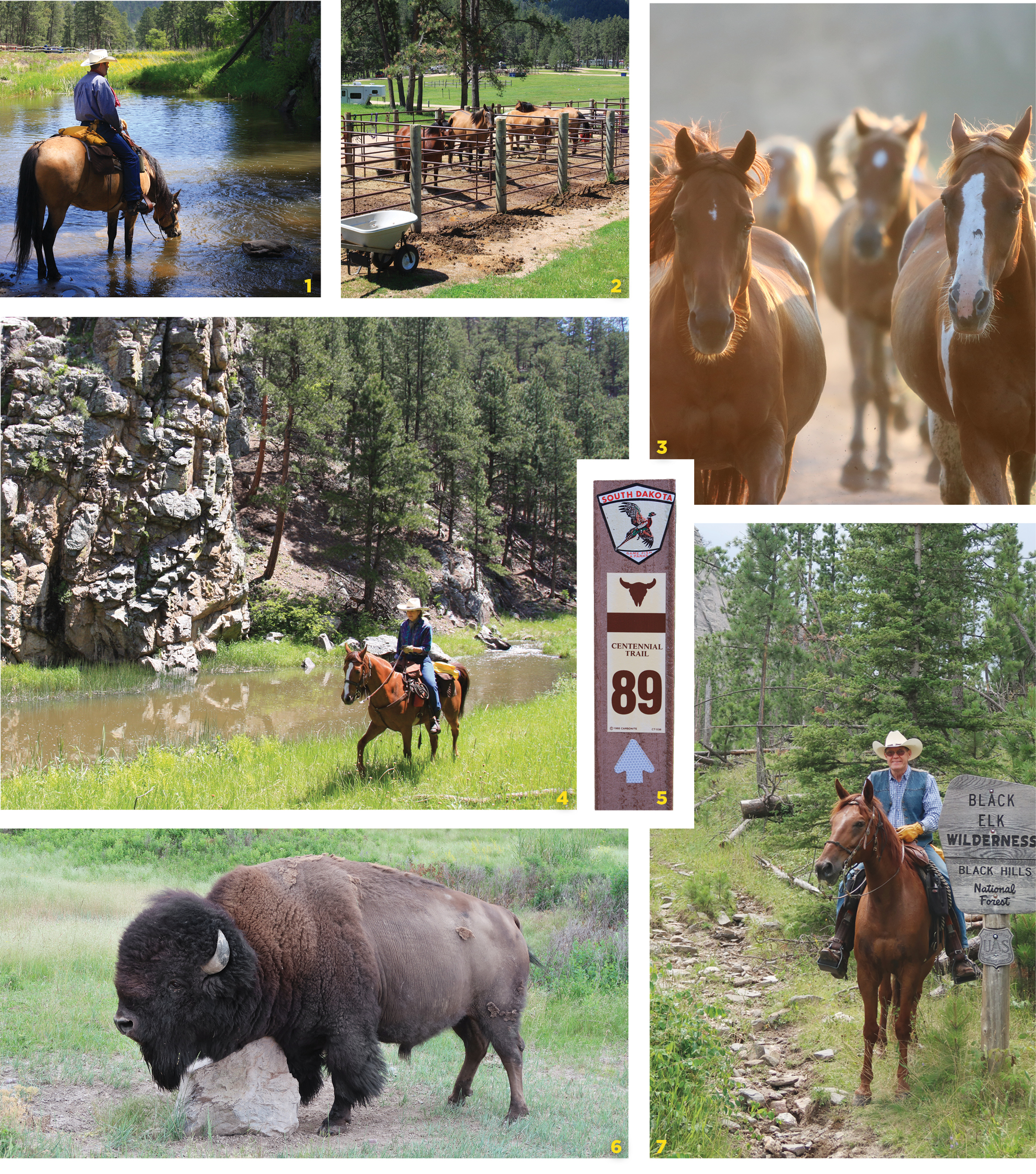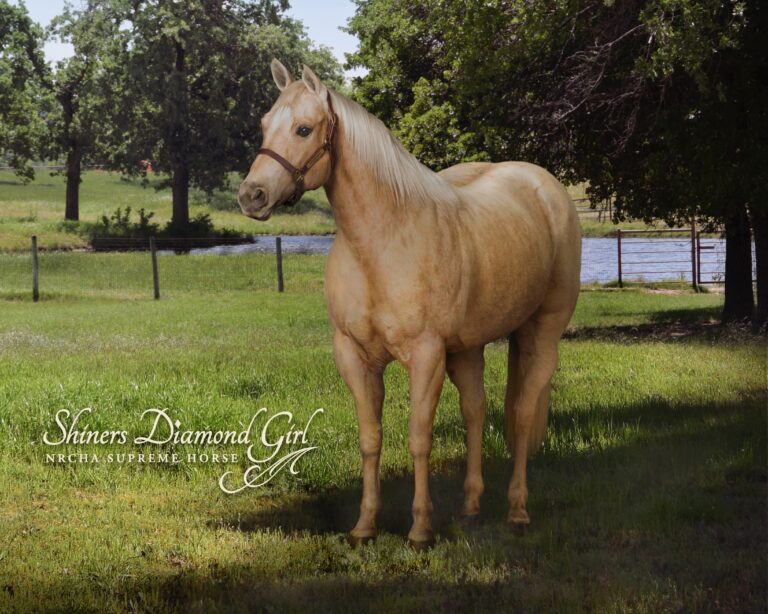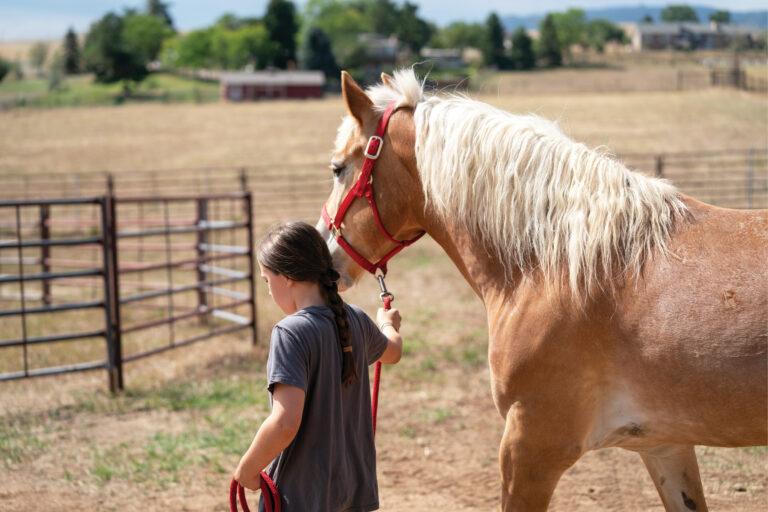Now is the time to plan for spring rides. Spring is a beautiful time of year in the Black Hills of South Dakota. The days are warming, but still cool. Wildflowers blanket the region. One of the first to bloom is the small, purple pasque flower, South Dakota’s state bloom. Also watch for fairybells, longspur violet, and lanceleaf bluebells.
[RELATED: Where-To-Ride Guide]
Early explorers described this region as a “true oasis in a wide and dreary desert.” And what an amazing oasis it is. Rugged rock formations and cool canyons are interspersed with greenery-draped gulches and verdant meadows. Ponderosa pines blanket large, undulating hills giving them a dark-green, almost black appearance.
Within the 1.2-million-acre Black Hills National Forest, you’ll find nearly 600 miles of riding trails in varied terrain. History marched loudly here, and its reverberations echo to this day.
Here, we’ll relate our riding adventures in Black Hills National Forest and our “know before you go” tips. (For a resource guide to Black Hills horse camps, see page 92. For a guide to attractions in the Black Hills area, see page 93.)
Custer State Park
Custer State Park, one of the largest state parks in the country, is home to elk, deer, bison, mountain lions, and mountain goats. French Creek Horse Camp is the only horse camp in Custer State Park. Make reservations, because this horse camp fills up quickly.
The camp is snuggled into a grassy valley punctuated with towering pines that provide shade. You’ll feel peaceful surrounded by forested ridges and listening to a babbling brook. All 26 campsites have electrical service, fire grates, picnic tables, and corrals. The restrooms are well maintained, and have flush toilets and hot showers. Evening entertainment may appear in the form of elk and bison.
One enticement of Custer State Park is that you can ride almost anywhere—cross-country or on trails. The few areas that don’t allow riding are clearly marked. Color-coded horse-trail maps and detailed topographic maps are available at the Peter Norbeck Visitor Center on Hwy. 16A and the Wildlife Station Visitor Center on Wildlife Loop Rd.
Four trails emerge from camp, well marked with posts and diamonds. The Centennial Trail, marked in red on the map, passes through camp and connects to other trails. In 1989, the Centennial Trail dedication was held in commemoration of the 100th anniversary of South Dakota’s statehood. The trail is 111 miles long; 22 of those miles are in Custer State Park.
We took the Centennial Trail to access other trails and create loops. If you ride north on the Centennial Trail, you can access French Creek Gorge. If you ride south, you’ll connect with the Big Tree, Robber’s Roost, Parker Canyon, and Racetrack Butte trails.
We headed to the park after the area had received 18 inches of rain over a two-week period, downing trees and creating bogs and washed-out trails. We still enjoyed excellent riding opportunities.
Our first ride was a memorable one through the French Creek Natural Area. This area was established to protect natural resources while providing visitors the opportunity to experience the untouched beauty of French Creek Gorge. Not so beautiful was the bumper crop of glossy poison ivy that seemed to be everywhere in the gorge.
The entrance to the area features a warning sign. Dangers listed include rugged terrain, lack of trail markings, numerous creek crossings, and rattlesnakes.
Riding French Creek Gorge is well worth the challenges. Trees, moss, and other flora cling precariously to colorful canyon walls. Swirling butterflies dance their way from one wildflower to the next. Hawks sail on air currents. An occasional trout surfaces to catch an unsuspecting mayfly.

We rode a loop to avoid a return trip through the poison ivy fields. To do so, we rode through switchback draw, got on the Centennial Trail, and returned to camp.
The next day, we decided to ride south on the Centennial Trail and do our own loop ride. At the time, it seemed like a good idea. However, we changed our route when our way through a narrow canyon was blocked by a large, snoozing bison. Kent thought we might be able to sneak around him; Charlene squashed that idea like a bug!
The Big Tree-Robber’s Roost loop is marked in blue on the horse-trail map; it takes about four hours to complete. This trail goes down some dirt roads and has ample opportunities for side explorations.
Big Tree is the second largest ponderosa pine tree in the United States: 132 feet high and 11 feet around. It’s estimated to be 300 years old. Imagine standing under a living thing that was already 60 years old at the time of the Revolutionary War.
Several trails south of camp offer opportunities for cross-country riding. You’ll most likely see bison. Be wary. More folks have been injured by bison than bears. Bison can seem lethargic but can unexpectedly become an enraged ton of charging horns!
We got a close-up view of the damage bison can do to a horse through an interesting young man we met at French Creek campground. A lone bull bison once wandered into his family’s barn. The confused bull became enraged and began charging anything that moved. Before it left, the bull had gored one horse to death and severely injured the young man’s horse. The horse still moved well but had horrific scars on his rump.
Blue Bell Lodge
Close to French Creek Horse Camp is the Blue Bell Lodge, a Western-style resort that offers horseback rides and chuckwagon dinners. The lodge itself is cozy and unpretentious; the emphasis is on making people feel comfortable and happy.
We didn’t stay here but did get to know a few Blue Bell wranglers. We also decided to check out the Blue Bell’s chuckwagon dinner. We were glad we did—it was an unforgettable experience.
Guests are loaded up onto yellow wagons and driven 1.5 miles to a secluded canyon where they’re treated to a tasty steak dinner. We rode our horses over and enjoyed dinner. Afterward, we listened to soulful renditions of old Western cowboy songs sung by a grizzled old cowpuncher. A red sinking sun in a bruise-purple sky added the finishing touches to this dream-like evening.
After the delectable Dutch oven peach cobbler, we mounted our horses and rode alongside the hay wagon back to Blue Bell. Twilight was falling, and the guest wagon was going oh-so-slowly. We picked up a faster gait, and Charlene’s hat flew off. Being the cowboy gentleman that he is, Kent cued Cowboy to pick up the hat in his teeth and turn his head so Kent could grab it. Kent gallantly gave Charlene the horse-slobbered hat. Everyone applauded their approval!
Palmer Gulch
Our next stop was Mount Rushmore KOA at Palmer Gulch, located 5 miles west of Mount Rushmore. This is the nation’s third largest KOA campground. The other nearby horse campgrounds were full. Fortunately, the managers were able to find a place for our two horses and our living-quarters trailer.
This KOA was like a mini-city full of RVs that spilled out active children every morning. Their parents stepped out slowly, clutching coffee cups, bracing for another day of “family vacation.” A key player in family entertainment was The Stables at Palmer Gulch, which had a strategic location at the entryway into the KOA campground.
We visited with Erica and Jim Husted, owners and operators of the horse concession. Their enthusiasm for giving rides was contagious and genuine. The horse corral is set up so that upon entering the KOA, the first thing you see are the horses’ heads as they stand in open stalls.
While we visited with the Husteds, an 8-year-old girl seriously talked to and petted a 25-year-old Morgan Horse, her eyes showing the magical connection some children have with horses.

The horses, which are ridden 12 to 15 miles daily, are well-fed and healthy looking. The Husteds also provide a family-friendly chuckwagon dinner complete with delicious steaks and fun entertainment.
The pens and stalls for guest horses are in the back end of the camp. To get to a short “leg-stretcher” ride from the guest stalls, go through the gate across from the stalls, and ride along the ponds to the other side of the valley. The main trail is to the right; the leg-stretcher ride is to the left.
If you ride a short distance to the left and go through another gate on the right, you’ll find a variety of loops. We followed valleys and ridges featuring rock formations and open forests. Our horses spotted several white-tailed deer; two were nice bucks in velvet. We also rode cross-country, creating our own rides.
The longer rides require a bit of awareness. To access these rides, turn right after crossing the short valley. The trail lies between two wooden fences about 10 feet apart. You follow this for almost a mile to get out of camp. Watch for concession riders, who may be passing you or coming up from behind on this narrow trail.
Part of this route is close to the campground where people come out of tents, kids play, and trailer doors open and close. It’s helpful to get your horse used to these kinds of distractions.
Just when you think you have it made out of camp, you come around a corner and into the horse-concession area. To avoid this busy area, bear a sharp left, but stay alert. You’ll immediately face a tunnel under a noisy highway. Once you’re through this gauntlet, you’re free to roam nature’s bountiful wilderness.
After the tunnel, ride a short distance to a road. Turn right, and follow the road until you reach trailheads and Willow Creek Horse Camp, about 1.2 miles from the KOA guest stalls.
The premier ride from here is to take the Lost Cabin Trail #2 to Black Elk Peak and come back on Harney Peak Trail #9, which makes a perfect 8.6-mile loop from Willow Creek Horse Camp. The complete ride from the KOA guest stalls and back is 11.6 miles with 2,142 feet of elevation gain.
The centerpiece of this loop is Black Elk Peak. This peak was called Harney peak until 2016, when it was renamed Black Elk Peak to honor Black Elk, an Oglala Lakota holy man held in high esteem by his people. At 7,242 feet in elevation, Black Elk Peak is the highest peak east of the Rocky Mountains. The stone steps and lookout tower at the top were constructed by the Civilian Conservation Corps.
When we were there, fallen trees blocked access to Black Elk Peak from both sides, so we didn’t get to do the loop. We did ride both access trails out and back.
The riding is gorgeous with fairly good trails. You travel through meadows and onto to higher elevations filled with pine trees and fascinating rock formations. The views from the trails are sublime. We treated ourselves to wild raspberries discovered on the Lost Cabin Trail.
Watch out for the notorious bog on the short Willow Creek Trail. We were told to avoid this “horse eating” bog. Indeed, we found later that a horse had died there.
On our ride to the Lost Cabin Trail, we missed the trailhead and ended up on the Willow Creek Trail at the ill-marked bog. Kent’s horse, Cowboy, went through with no problem. Charlene’s horse, Jake, followed just a few feet away—and sank into the bog! Charlene managed to jump to safety. We experienced a few heart-thumping, fingernail-biting moments before Jake freed himself.
The United States Forest Service is planning to fix the bog. To avoid it altogether, get on the correct trailhead for the Lost Cabin Trail. From Willow Creek Horse Camp, take the left road; the trailhead is at the end of the loop.
Another enjoyable trail from camp is the Willow Creek Rushmore Trail #5, which takes you to Horsethief Lake Trail #14 and to the Centennial Trail #89. The trailhead for this ride is the same one you would take to access the other trails near Willow Creek Horse Camp.
The riding on these trails is stunning. You’ll go through stately pines with gorgeous views of boulder formations. Rock spires pierce through the canopy of trees. If you take a spur trail off the Centennial Trail, you’ll arrive across the road from Mount Rushmore.
Know Before You Go
South Dakota is a rugged state with extreme weather and abundant wildlife. Here’s what you need to know before you plan a trip to the Black Hills area.
KNOW WHEN TO GO. The best time of the year for riding the Black Hills is spring through fall. Avoid early August when the Sturgis Rally can bring as many as 500,000 motorcycles to the Black Hills.
MAKE RESERVATIONS. Make advance reservations at the horse camps you wish to visit to secure your spot.
PREPARE YOUR HORSE. Area trails can be rocky, so shoe your horse before you leave or bring rugged hoof boots. Also, condition your horse so he’ll be ready for elevation gain. Bring fly spray to repel insects and ticks.
GET TRAVELING PAPERS. Make an appointment with your veterinarian to get the necessary traveling papers for your horse. You’ll likely need a Coggins test to show that your horse is negative for equine infectious anemia (EIA) and a Certificate of Veterinary Inspection.
PACK LAYERS. Weather can be unpredictable. Hail, snow, wind, and rain can kick up almost any time of year. Bring adequate protective clothing, and dress in layers.
BRING WEED-FREE HAY. You’ll need certified weed-free forage for camping on national forest land. For a list of sources in South Dakota, go to sdda.sd.gov/ag-services/weed-and-pest-control/weed-free-forage/.
PREPARE FOR WILDLIFE. Be aware that your horse will encounter wildlife, such as deer, elk, and bison.
PREPARE FOR POISON IVY. Poison ivy in the area can reach boot level while you’re in the saddle. Wear protective clothing. Bring rubbing alcohol, as well as calamine lotion or hydrocortisone cream, in case you come in contact with the plant.
Black Hills Horse Camps
Black Hills Horse and Hound Camp blackhillshorseandhoundcamp.com
Broken Arrow Campground brokenarrowhorsecamp.com
Elk Haven Horse Camp elkhavenhorsecamp.com
French Creek Horse Camp gfp.sd.gov/parks/detail/custer-state-park/
Hay Creek Ranch haycreekranch.net
Mount Rushmore KOA at Palmer Gulch koa.com
Willow Creek Horse Camp usda.gov/blackhills
Black Hills Attractions
Badlands National Park nps.gov/badl/index.htm
Bear Country USA bearcountryusa.com
Crazy Horse Memorial crazyhorsememorial.org
Custer State Park gfp.sd.gov/parks/detail/custer-state-park/
Historic Deadwood deadwood.com
Jewel Cave National Park nps.gov/jeca/index.htm
Mount Rushmore National Memorial nps.gov/moru/index.htm
Reptile Gardens reptilegardens.com
Wind Cave National Park nps.gov/wica/index.htm






